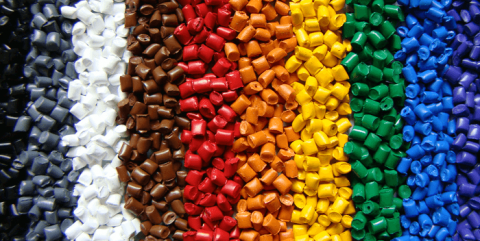Most plastic is recyclable but efforts to actually recycle it are not significant. All Scraperite products are 100% recyclable. Perhaps it's a lack of understanding among consumers that prevents them from giving useless plastic objects for recycling or maybe government agencies are unaware of how recycled plastic can be the basis for many useful and inexpensive materials. Whatever the case, knowing the different grades of plastic, whether they can be recycled, and what they can be recycled into can help.
PET or PETE
Polyethylene terephthalate or PET or PETE is a common grade of plastic used in the manufacture of everyday products like bottles, food containers and jars. The grade is favored because of its low cost, durability, light weight and high recyclability. A recycled PET product will have the same strength, versatility and recyclability as one made of virgin plastic.PET is also noted for its safety as it doesn't leach chemicals to cause health issues. Recycled products can be turned into winter clothing, bags and carpets.
HDPE
High density polypropylene or HDPE is a thermoplastic that's also in common use. Its applications range from commonplace products to industrial uses like pipe systems, corrosion protection in steel pipelines, geomembranes, and vehicle fuel tanks.HDPE is commonly used to make food containers which means it's a safe grade of plastic that hasn't been found to cause cancer and other diseases. However, if the plastic isn't marketed with food or drinks, it shouldn't be used to store any.HDPE can be recycled into fences and plastic lumber.
PVC
PVC or polyvinyl chloride is used in applications like plumbing, flooring insulation for electric cables and clothing and furniture. It cannot be used as food and drinks containers and should, in fact, not come into contact with them as it's harmful when ingested.Though not often recycled, it can be repurposed into flooring and mobile home skirting.
LDPE
Low density polypropylene or LDPE is also not frequently recycled. When it is, it can be turned into plastic lumber, furniture and garbage cans. In its virgin form, LDPE can be found in sandwich bags, plastic grocery bags and squeezable bottles.
PP
PP or polypropylene, like PVC and LDPE, is not commonly recycled but can be. It's used to make certain food containers like yoghurt and margarine containers, plastic diapers and prescription bottles. When recycled, you can find it in battery cables and ice scrapers.
PS
Polystyrene or PS, more commonly known by its trademark name Styrofoam, is derived from a liquid petrochemical. It may be rigid or foamed depending on application. It's recyclable but the process is time-consuming and expensive even though virgin polystyrene products are cheap. Still, it can be recycled into license plate frames and more commonly as insulation for buildings.Though polystyrene is frequently used to hold food and drink, the inclusion of chemicals like benzene, butadiene and styrene make it an unsuitable material.
Other
Plastics described as 'Other' include those plastics that do not fall into the listed grades. They're usually polylactide and polycarbonate which are difficult to recycle. Baby bottles and compact discs are common products made of 'Other' plastic and can be recycled into plastic lumber. It's not used to contain food and drink. Article Source: http://EzineArticles.com/7881586
